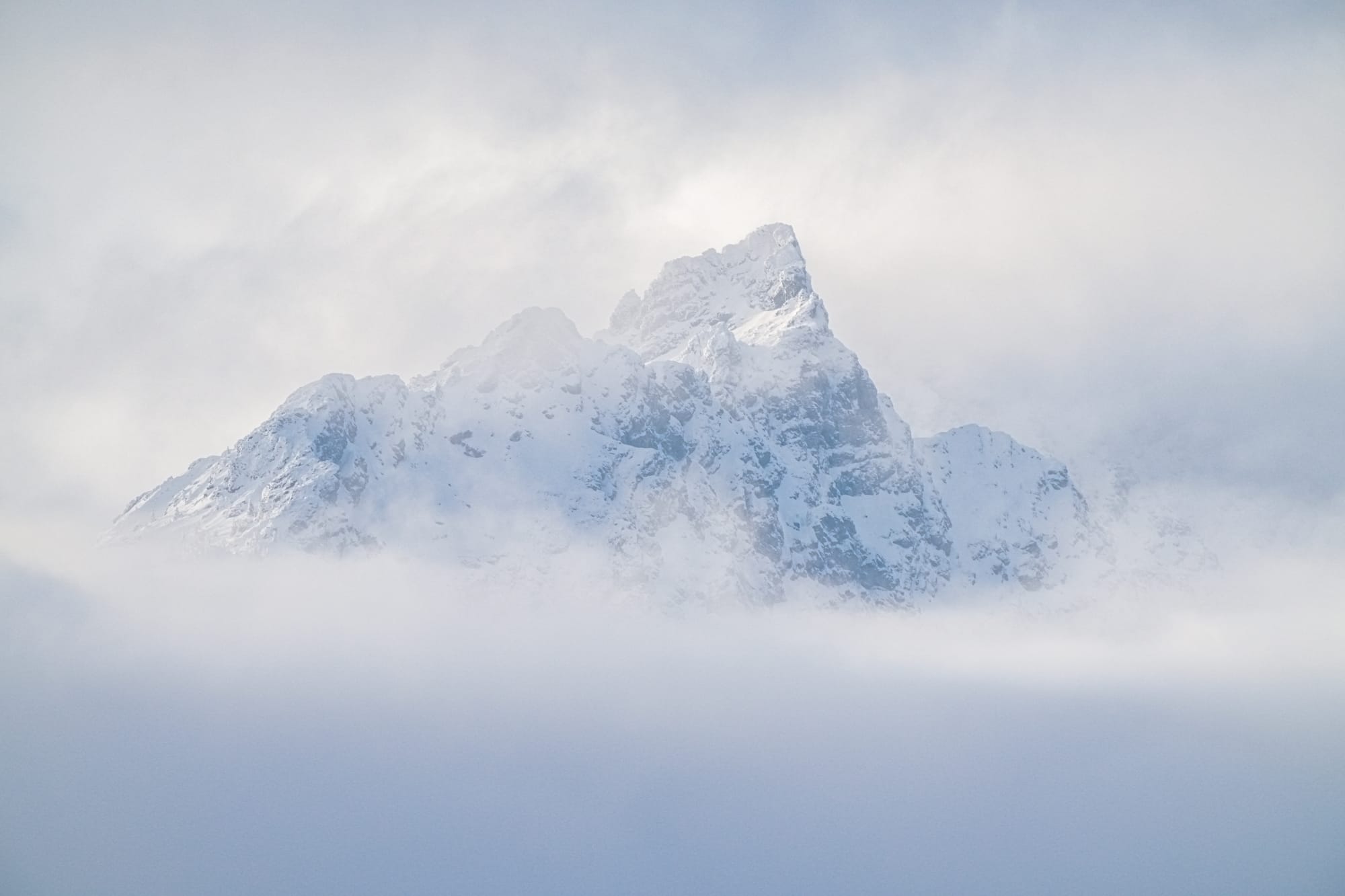November 24-30, 2024
So far, so very gray

This was another slow week with an icy snowpack that limited outdoor activities, along with the longest stretch of continuously gray days in years.
Week in Review
Much like last week, the snowpack continues to be a hurdle to getting outside. Granted, the snow is no longer a sloppy mess, but this week was still a bit too icy and skimpy for widespread access onto skiing trails. Plus, this long stretch of continuously gray skies hasn't been very inspiring either, though on a few occasions the sky admitted slivers of light and livened things up.


Despite staying close to home, I still managed to see some animals around the house this week. California quail continue to be regular visitors, and in the winter, they are especially conspicuous because they gather in large groups and are highly social.

One surprising sighting was a western meadowlark that stopped briefly to search for food in a tiny strip of exposed grass. Meadowlarks eat worms, insects, and grains, so you can only imagine how little food is available for them when the ground is covered in snow. They will linger in the valley as long as there is open ground, especially where livestock are being fed and keeping the ground exposed, but in general they're scarce to absent in the winter.

Another surprise sighting was a carrion beetle found walking on the snow. You might occasionally spot one of these beetles on or near dead animals in the summer, but it's hard to explain a sighting of one in the winter, especially because there aren't any decaying carcasses for their larvae to grow up in.

It's also interesting to watch some of the many ways that animals are forced to adjust to the snow. Winter can be especially hard on deer because it limits their access to forage, but deer save energy by packing down paths for each other. This means that getting around is easier, but it also makes things harder because deer then end up competing for scarce food along the same few trails.

Though foods are limited above the snow, there's an entire world of food under the snow—if you can get to it. Predators like large owls and coyotes are especially good at punching through the snow to catch voles and mice trapped in their burrows. Hunting this way takes some effort, but it ensures access to a fairly dependable source of food all winter long.

Observation of the Week: Short-eared Owl
Although short-eared owls are one of the most widespread owls in the world and active in the daytime, it is always a red-letter day when you see one of these remarkable birds. In fact, it's been so many years since I've seen one that when I saw one this week, I found myself calling it a "short-horned owl" because I'd forgotten the correct name!

Winter can be a great time to look for these owls because you might spot one crisscrossing over snow-covered fields and meadows in search of rodents. They are especially active in the late afternoon, but in the fading light it's easy to mistake them for passing hawks.

In fact, when I first saw this owl, I ignored it because I was focused on photographing a coyote and I thought it was a hawk. Only later, when I spotted the owl chasing a red-tailed hawk did I realize how different it was.

Fortunately, the owl stuck around and continued to hunt but unfortunately the light had gotten dim, plus a trio of black-billed magpies had started chasing the owl, so I didn't get any great photos.


